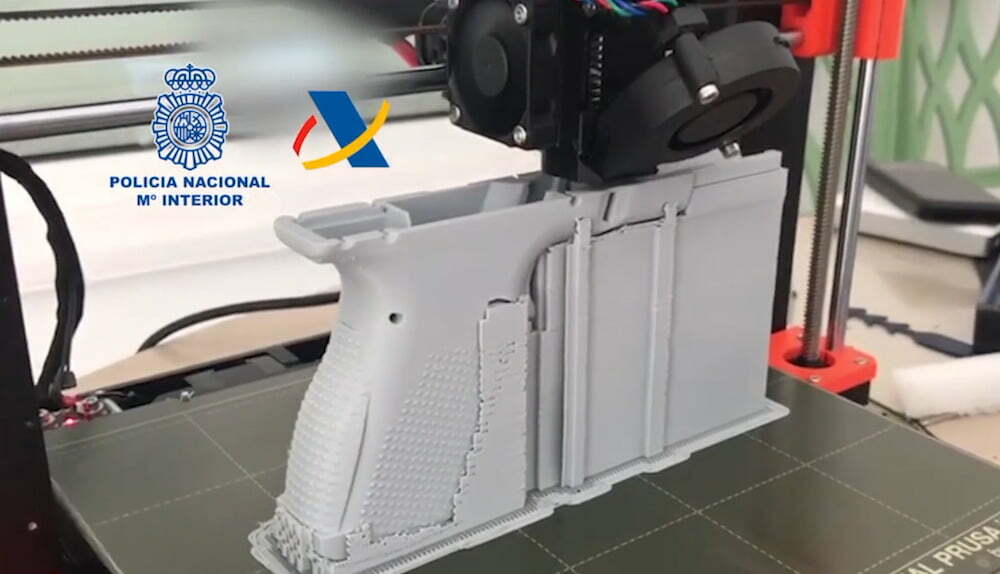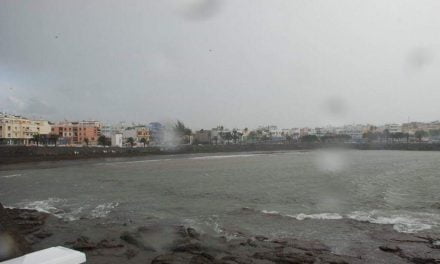The man found making weapons using 3D printers, as well as homemade improvised explosives devices (IEDs) who was arrested in Santa Cruz de Tenerife last September, after a secret investigation that lasted more than year, has been identified with the initials JM. According to police sources, he presented “a worrying profile”, as someone who mixes an obsession with weaponry and a manifest interest in terrorist activities, urban guerrilla-craft and a far-right ideology. He is known to have used the so-called “dark web” to obtain manuals to further his dangerous activities and to have produced a number of what appear to look like functioning 3D printed guns.
 The 55-year-old, of Spanish nationality, owns four properties on Tenerife and in the largest he was discovered to have a functioning workshop to build weapons, in an area known as Vistabella, next to the San Joaquín castle.
The 55-year-old, of Spanish nationality, owns four properties on Tenerife and in the largest he was discovered to have a functioning workshop to build weapons, in an area known as Vistabella, next to the San Joaquín castle.
Investigators from the Policía Nacional General Information Commissary working with the Provincial Information Brigade and the Aduanas Customs Surveillance Investigation Group found his only known economic activity was as the administrator of a residence for the elderly, also located in Vistabella.
However, agents started a patrimonial investigation to find out if he has other income. JM is currently on probation pending trial. Up until September, he had no criminal record in Spain. The investigation began in early 2020, when intelligence detected that he was acquiring the precursor items necessary to manufacture explosive devices as well as ordering “Nazi supremacists” material. In one statement, the accused is said to have spontaneously claimed that he was linked to the Venezuelan Army until just over 20 years ago, when Hugo Chávez came to power. That claim has been discounted for now.
After travelling to Florida (USA) his interest in the operation and use of small and long barrelled weapons is thought to have grown exponentially. He frequented shooting galleries and ranges and arms trade fairs. According to sources, “he is obsessed” with firearms, but he has not displayed any clear signs of mental illness. During the proceedings of the investigation, it has been proven that he accessed the dark web to download manuals on terrorism and bomb making, some of which he produced and later exploded.
 The existence of so many frames for 3D printed guns seems to suggest that his overall objective was to commercialise the units, though it is not clear if he had other specific plans or links to groups with intentions to use them. Despite the fact that 3D printers can now manufacture up to 95% of the parts of a handgun in plastic, there are still some element that must be made of metal, including the firing pin, which can be acquired from China or the United States over the internet. Experts consulted by TheCanaryNews say that it is highly improbable that most individuals would be able to make a functioning weapon, due to the extreme forces involved, meaning that if the frames were not particularly strengthened in the right way they would be more likely to explode in the had of the user than to cause any serious harm to others. But, they say, it can be done.
The existence of so many frames for 3D printed guns seems to suggest that his overall objective was to commercialise the units, though it is not clear if he had other specific plans or links to groups with intentions to use them. Despite the fact that 3D printers can now manufacture up to 95% of the parts of a handgun in plastic, there are still some element that must be made of metal, including the firing pin, which can be acquired from China or the United States over the internet. Experts consulted by TheCanaryNews say that it is highly improbable that most individuals would be able to make a functioning weapon, due to the extreme forces involved, meaning that if the frames were not particularly strengthened in the right way they would be more likely to explode in the had of the user than to cause any serious harm to others. But, they say, it can be done.













